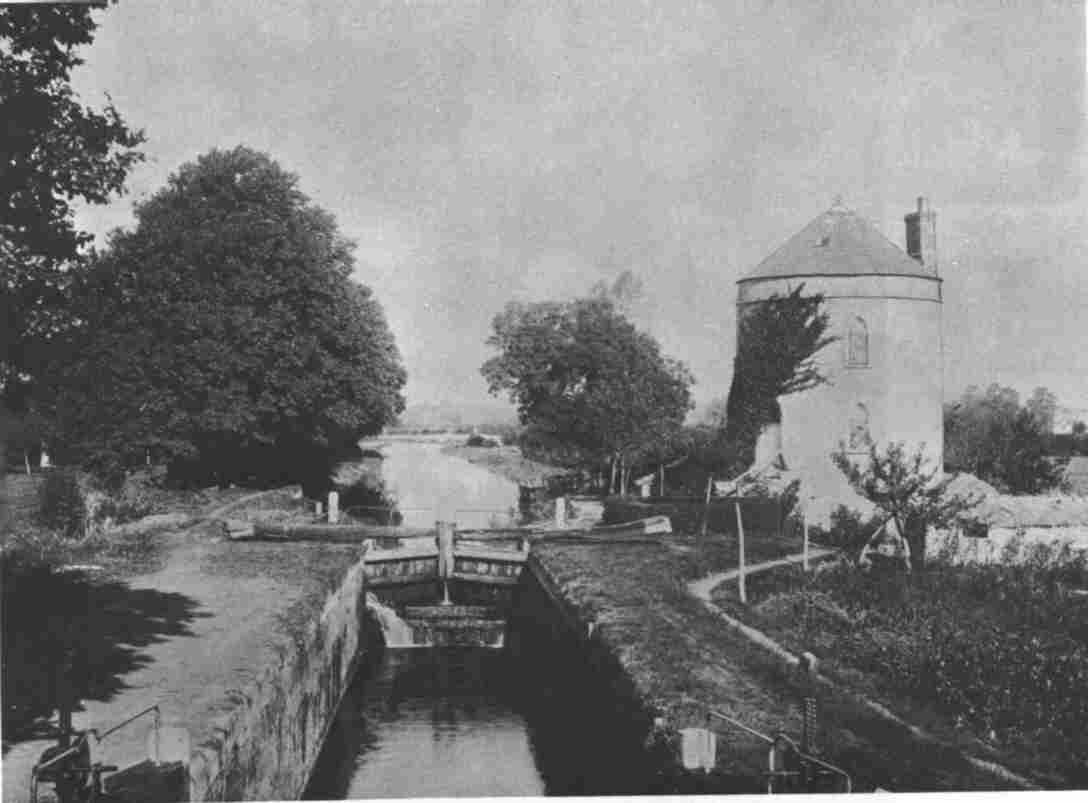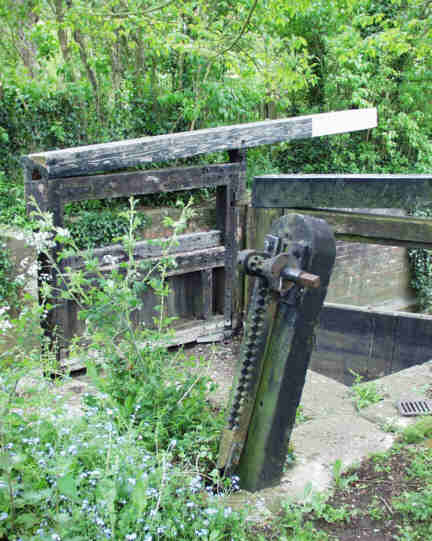Cerney Wick Picture Gallery Back to T&S Canal Index
 The lock keeper station here was moved to Wildmoorway Lower Lock to supervise
the operation of the side pond there and apparently orders were given to
pull the roundhouse down. Fortunately, this did not happen and, apart from
a few years of semi dereliction in the 1960s, it has remained a dwelling.
The lock keeper station here was moved to Wildmoorway Lower Lock to supervise
the operation of the side pond there and apparently orders were given to
pull the roundhouse down. Fortunately, this did not happen and, apart from
a few years of semi dereliction in the 1960s, it has remained a dwelling. had extensive repairs carried out to it. On the towpath side, the
outer 9" of brickwork had parted company with the structural wall behind
and had to be rebuilt. This was done reusing the same bricks with plenty
of tying between the front wall and concrete infill and between the
concrete infill and the wall behind. The very substantial back wall was
made of large rough cotswold stone and mortar with timber tie rods extending
out into the ground behind.
had extensive repairs carried out to it. On the towpath side, the
outer 9" of brickwork had parted company with the structural wall behind
and had to be rebuilt. This was done reusing the same bricks with plenty
of tying between the front wall and concrete infill and between the
concrete infill and the wall behind. The very substantial back wall was
made of large rough cotswold stone and mortar with timber tie rods extending
out into the ground behind. | To Picture Gallery
|
|
|
Maintained by: ken.burgin@pikelock.com |
Copyright © Ken Burgin 2002 - all rights reserved |